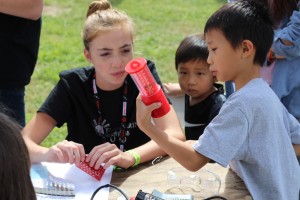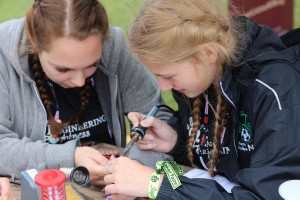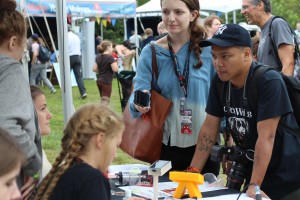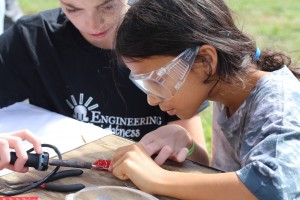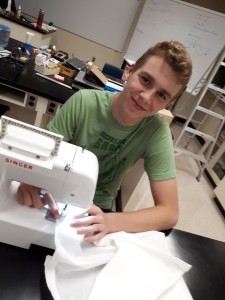Being from small town New Brunswick, the poorest province in Canada, we are bombarded with negative stories and the mass migration out of our province. When once we were the richest province in the country, no one wants our forest, our fish, our gypsum, or grind stones, our shale gas. Students quickly develop a sense that nothing good comes from New Brunswick, including themselves. Many think they have to leave or they have given up if they stay. We cannot compete this the rest of the world.
This trip to NYC has much deeper lessons than literacy, or engineering or graphic arts or sewing. The purposeful theme is to teach lessons that fight the negative narrative that students hear every day. You are from New Brunswick and not only can you can you compete with the rest of the world, YOU CAN LEAD!
The World Maker Faire invited you to the Faire and gave you THE prime location. The NY Times spent 30 minutes with you and are quoting you for their magazine focused on learning. The Maker Faire Editors gave you an Editor’s Choice Award.
Just to drive the lesson home, We went to the broadway show, “School of Rock”, where my previous student who sat at their same desks, was the lead. Justin took us back stage and described his unique wandering path as he followed his dream backed up with lots of work, dedication, and hope. There is a whole post dedicated to Justin and the School of Rock and how his story parallels the themes in the musical.
The lesson was received by more than just the students. In addition to my students, there were almost 40 teachers from the Maritimes also attending the MakerFaire, in large part because of the efforts of Brilliant Labs. The teachers walking also saw that NB students could compete and excel on the world scale. My students are no better and no worse than their students.
I believe that there will be many more student run booths from NB at the World Maker Faire next year.
Next year, I am hoping to show that not only can NB students compete on the world scale, but I also want to show that the Anglophone and Francophone sectors can cooperate. Can we go to the MakerFaire in the UK and Paris as a bilingual team? Can the Anglophone students coach the Francophone students at the UK MakerFaire and shortly afterwards, can the Francophone students coach the Anglophone students at the Paris MakerFaire.

